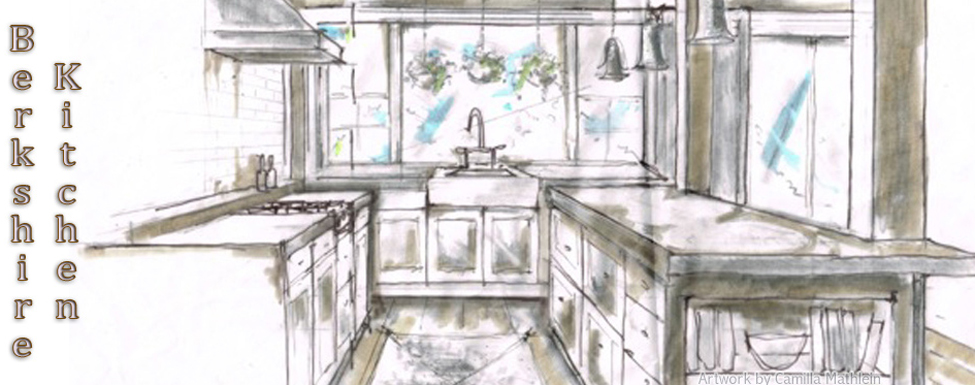Celebrating Robert Burns
I don’t know many people who have tried haggis - perhaps a couple dozen folks - but generally those who have tasted it enjoyed it. But if you mention the word haggis to the uninitiated, without exception they grimace and flee with fear as though they are running from Mel Gibson in Braveheart.
I have to admit that haggis has gotten a bad rap over the years. I think it begins with the name… the term “haggis” seems to conjure up visions of Shakespeare’s witches in Hamlet, boiling a sheep’s stomach filled with haggis in a simmering cauldron. Granted, the thought of eating something prepared in a sheep’s stomach doesn’t seem that appealing but anyone who has eaten American sausages or hotdogs has probably consumed unaware similar innards.
Haggis is the national dish of Scotland and is traditionally served at gatherings celebrating the Scottish poet and lyricist Robert Burns’ birthday on January 25th. The Cornwall Library (Pine Street, Cornwall, CT) will be celebrating a Burns’ Night on Saturday January 25th at 7:30PM.
Burns’ name will forever be associated with haggis through his poem Address to a Haggis which is recited at the Burns’ dinners when the haggis is theatrically paraded in on a silver platter accompanied by bagpipes. The haggis is served with “neeps and tatties” (mashed turnips and potatoes) and a dram or two of Scotch whiskey. What’s not to love?
Haggis is traditionally made with sheep’s innards (heart, liver and lungs), chopped onion, suet, savory spices (pepper, allspice, nutmeg, salt), and Scottish oatmeal, cooked in a casing made from a sheep’s stomach. It’s very similar in taste and texture to the ingredients used to make stuffed cabbage rolls.
This year I decided I would learn how to make some fresh haggis for Cornwall Library’s Burns’ Night that would pay tribute to Burns but be delicious and very palpable. It took me several attempts before I came up with the perfect combination of traditional savory flavor while using ingredients that everyone would find appealing. My poor husband has eaten haggis more over the past month than anyone I’ve ever met!
The biggest challenge for me was finding the right oatmeal to use. I thought McCann’s Steel Cut Oats would be the best but they overpowered the dish with their chewiness. The best is Bob’s Red Mill Scottish Oatmeal (go figure) which is stone ground into coarse little nuggets. For the meat, my recipe uses ground lamb and chopped chicken livers, which gives the savory flavor without being too gamey. Instead of adding suet, I sauté the onions and meats in diced pancetta. The haggis is cooked in a cast iron pan – only one pan to clean and easy to serve. I think of my recipe as “Haggis for the Modern Man.”
I’m looking forward to an evening of kilts, music, poetry, scotch and delicious food as we celebrate Burns’ birthday! If you’d like to join us, call the Cornwall Library at 860-672-6874. Space is limited, so reservations and advance payment are required.
HAGGIS
Ingredients
4 ounces diced pancetta
½ large sweet onion, chopped
1 teaspoon ground black pepper
½ teaspoon salt
1 teaspoon allspice
1 ½ teaspoons ground nutmeg
½ teaspoon ground cinnamon
1 ½ teaspoons ground cardamom
1 teaspoon dried thyme
1 ¼ pounds ground lamb
1 pound chicken livers, coarsely chopped
2 cups chicken stock, divided
1 cup Bob’s Red Mill Scottish Oatmeal*
Extra virgin olive oil
Special Equipment
11 1/2” inch diameter cast iron pan – or – 9” x 13” casserole dish. If you use a casserole dish for baking, you will first need to sauté the ingredients in a frying pan on the stove.
Directions
Preheat the oven to 375 degrees.
In your large cast iron pan, cook the pancetta until browned and the fat is released. Remove the pancetta with a slotted spoon and reserve in a small bowl.
In the remaining fat, sauté the chopped onion for about 5 minutes until it has softened and is translucent. Return the pancetta to the pan. Sprinkle all the spices into the pan (salt through thyme) and stir to combine.
Add the ground lamb to the pan and cook until browned, then add the chopped chicken livers and continue cooking for 5 additional minutes. The chicken livers might still appear a bit pink at this point but will continue to cook.
Slowly pour one cup of stock over the mixture, cover with foil, and simmer on the stove for 10 minutes.
Add 1 cup Bob’s Red Mill Scottish Oatmeal, stirring well to combine. Return the mixture to a simmer on the stove, then cover again with foil and bake in the oven at 375 degrees for 10 minutes.
Carefully turn back the foil and pour in another ½ cup of stock. Bake 10 additional minutes in the oven.
At this point remove the foil and let the haggis brown in the oven. If it seems a bit dry, add the final ½ cup of stock before baking another 10 minutes (for a total of 10 minutes on the stove and 30 minutes in the oven). (Since a regular breakfast recipe of Bob’s Red Mill Scottish Oatmeal only takes 10 minutes to cook on the stovetop, the baked oatmeal in the haggis should be a bit chewy, but cooked through and well-incorporated into the mixture).
Serve the haggis with some mashed potatoes, mashed turnips and a wee dram or two of scotch for a traditional Scottish meal.

